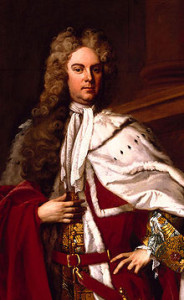Wigmore Hall 25th April: G. F. Handel: Esther (c.1720)
Dunedin Consort John Butt – Director
Soloists: Mhairi Lawson- Esther James Gilchrist – Assuerus Matthew Brook – Haman Nicholas Mulroy – Mordecai Thomas Hobbs – Officer Tim Med – PriestI knew of Esther from my late adolescence when the Handel Oratorios became something of an obsession of mine. In those long lost days of my youth, there were not than many recordings of that many of the Oratorios beyond the multiples of Messiah ranging from Sir Malcolm Sargent and the serried bosomed masses of the Huddersfield Choral and the first recordings of editions like that of Basil Lam which tried to return this masterpiece to its original forces and sound. In the fifty years between the world of baroque and early classical has not merely moved-on; it is a new heaven on a new earth.
Last night Esther ceased to be a name and became a reality: what a name; what a reality I will start at the end. The third scene of the third act is essentially an extended chorus: a chorus with trumpets, organ, continuo strings and woodwind, interspersed with duets for soloists and trumpet; tenor and soprano; and then two basses. It is everything and a little more one might expect from Handel. The programme notes say this is handel’s longest ever chorus and it is simply breathtaking. It might have come from Maccabeus; or Samson; or Saul – all of which are twenty years or more away from the composer’s imagination. The second act has three notable pieces including a wonderful aria for soprano; a duet for tenor and soprano and a tenor aria. These might be from any of the great operas. They have the usual A, B; A, B form and are sung da cappo. the first Act is perhaps a touch more sombre – the programme compares it to Acis & Galatea which Handel writes for the same patron, James Brydges.
Personally they remind me more of the tone found in the second and third of the Chandos anthems, also written for Brydges who as ninth baron Chandos was one of the leading Whigs of the oligarchy; created Viscount wilton and Earl of Carnarvon in 1714; and Marquess of Carnarvon and Duke of Chandos in 1719. He became a patron of Alexander Pope as well as Handel. Pope may have assisted with the libretti of both Acis & Galatea and Esther. James’s youngest son Henry becomes second duke and was patron of the Foundling hospital for which Handel wrote Messiah. Esther was written at the enormous palace in Edgware, North London. Cannons splendour astonished Europe. There was also a town house in Cavendishe Square which was never completed. They lost most of the family fortune in the South Sea Bubble and never fully recovered from the disaster. The second duke was forced to sell Cannons, lock, stock and Augustan facade in a firesale 1747. It’s extravagence drew this barbed observation:
Light quirks of music, broken and uneven,
Make the soul dance upon a jig to heaven,
On painted ceilings you devoutly stare
Where sprawl the saints of Verrio or Laguerre
Last night was more Chandos in triumph. There was nothing broken, uneven or of light quirks in Esther.The playing and singing throughout was wonderful. Though I am afraid I did not think too much of Gilchrist who was allowed both to over-act and over-strain his voice in a blary account of Assuerus. I heard him sing recently in Buxton last summer where he gave an equally overwrought performance in Jeptha. The counter-tenor Matthew brook was a revelation and has a gorgeous voice. Both the sopranos sang well near to handelian perfection; in fact all the soloists sang with joie de vivre; they decorated with clever vocal restraint; they all sang well together and were balanced beautifully against one another. The harpist was amazing; as was the trumpet soloist. The original Trumpet from the period is such a fine instrument and makes a glorious sound: bright; soaring gold from brass but its tone still sharply cutting-edge as it slices through the chromatic harmonies. It also fiendishly difficult to play well as it requires the breath control of an athlete
Composed between 1718 and 1720, Esther is of major significance as Handel’s first English Oratorio. It is of major significance in another way too: it was in 1732 that a performance given in the chapel royal caused such a stir that handel chose to return to this form in order to make himself some money and restore his flagging popularity.
The rest as they say is history.
The critically acclaimed Edinburgh based Dunedin Consort made their only 2013 appearance in London under the musical direction of John Butt. If you get the chance you simply must hear these guys: they’re so special. Nights do not come better than last night at the Wigmore. Let Esther be admitted to the performing canon of Handel: Amen, Alleluia, Amen.
There are great recordings of all the Chandos Anthems available these days. The Dunedin consort have one of Esther. It is a must for all those who love Handel.


